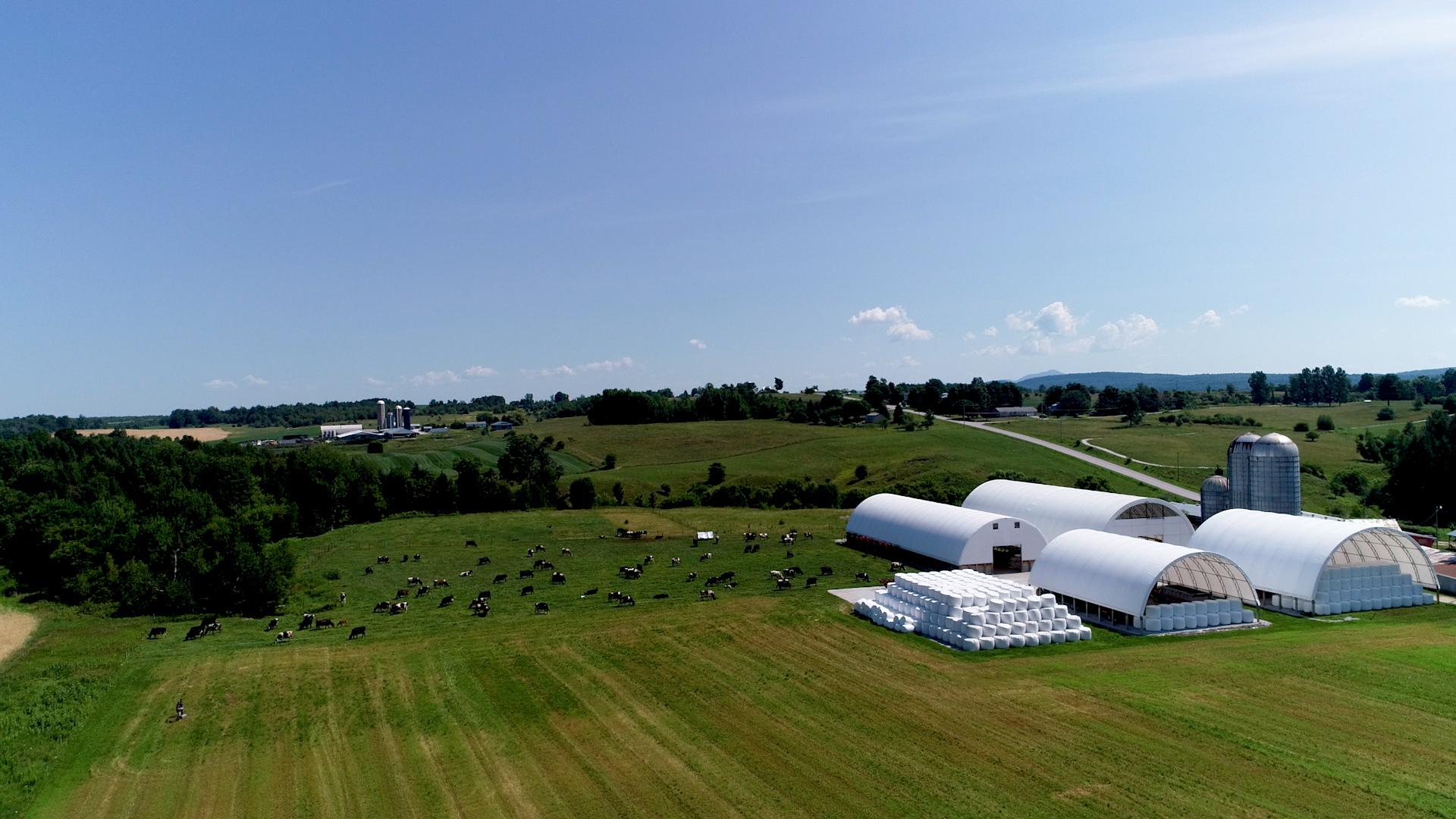
For generations, Vermont has been defined by dairy, an industry that has an economic impact of $2.2 billion annually and adds nearly $3 million in circulating cash daily. Wherever you are in the state, and whomever you meet, you are not far removed from the dairy sector, and the socio-economic impacts stretch well beyond the farm gate. Many farm families have been on the same piece of land for over 100 years and hold deep-seated knowledge and a connection to a specific place across time. As the current dairy crisis roils the industry, Vermont is rapidly losing the highest-value use of the working landscape, putting the agricultural land base at risk of permanent loss.
Vermont’s 664 dairy farms1 (470 conventional and 188 organic) produce about two thirds of all milk in New England, with the bulk of it being processed by one of the 151 plants into fluid milk, cheese, butter, ice cream, yogurt, and powder. In 2010, for contrast, there were 1,015 dairy farms and just 66 processors in Vermont, which is illustrative of the rapidly evolving nature of the state’s dairy sector and the success of value-added processing as a viable option.
Vermont’s dairy farms encompass a variety of scales, production practices, and geographic locations. From 1,200-cow freestall facilities to 30-cow tie stall farms to 60-cow grass-based operations, Vermont’s farms run the gamut of possibilities. Unlike the rest of the nation, and making Vermont and New England unique and well-positioned to be the leader in dairy innovation, over 80% of all dairy farms milk fewer than 200 cows. The small, localized nature of the dairy sector gives it greater capacity to evolve in concert with the ever-changing dairy market.
Vermont’s dairy sector, across all scales and production methods, has been impacted by the extended downturn in pricing over the past five years, which has been exacerbated by decreased exports and a changing global political landscape. While conventional milk prices have always fluctuated, typically in a three-year pattern from high to low, and organic milk had consistently higher prices over conventional, this long-term decline in both markets is having a significant impact on farms across the country as the cost of production remains at or above the price paid for milk. With the continued overabundance of milk production and record levels of processed products in storage, conventional milk price forecasts do not show a meaningful increase for potentially years to come. Organic milk is buffered to some degree from such drastic market swings, though organic producers have had production quotas and received lower prices over the past couple of years.
Dairy farmers are also faced with several other concurrent, high-stakes issues. At the forefront for Vermont are water quality and other environmental concerns, both of which are being addressed by regulations at the state and federal levels. The resulting changes to regulation have increased the financial and reporting burden for farmers. The extended downturn in pricing has led to a loss of equity for many farms and the inability to maintain equipment or infrastructure. For some farms, this has meant putting off critical water quality projects, which could exacerbate compliance issues. Finally, changing consumer preferences and a general negative public perception of dairy farming have created a perfect storm to make the current situation one of the most challenging the sector has ever experienced.
In response to the current dairy crisis, the amount of interest and work focused on the dairy industry has continued to increase and is originating from many different perspectives. Over the past two years, this work has included: Northern Tier Dairy Summit; Dairy and Water Quality Collaborative; Future of Agriculture working group; Working Lands Enterprise Initiative dairy focused funds; Vermont Milk Commission; legislative dairy farm tours; Secretary’s Dairy Advisory Committee; USDA Dairy Innovation Initiative; Payment for Ecosystem Services working group; positive dairy messaging campaign; and a dairy market assessment.

